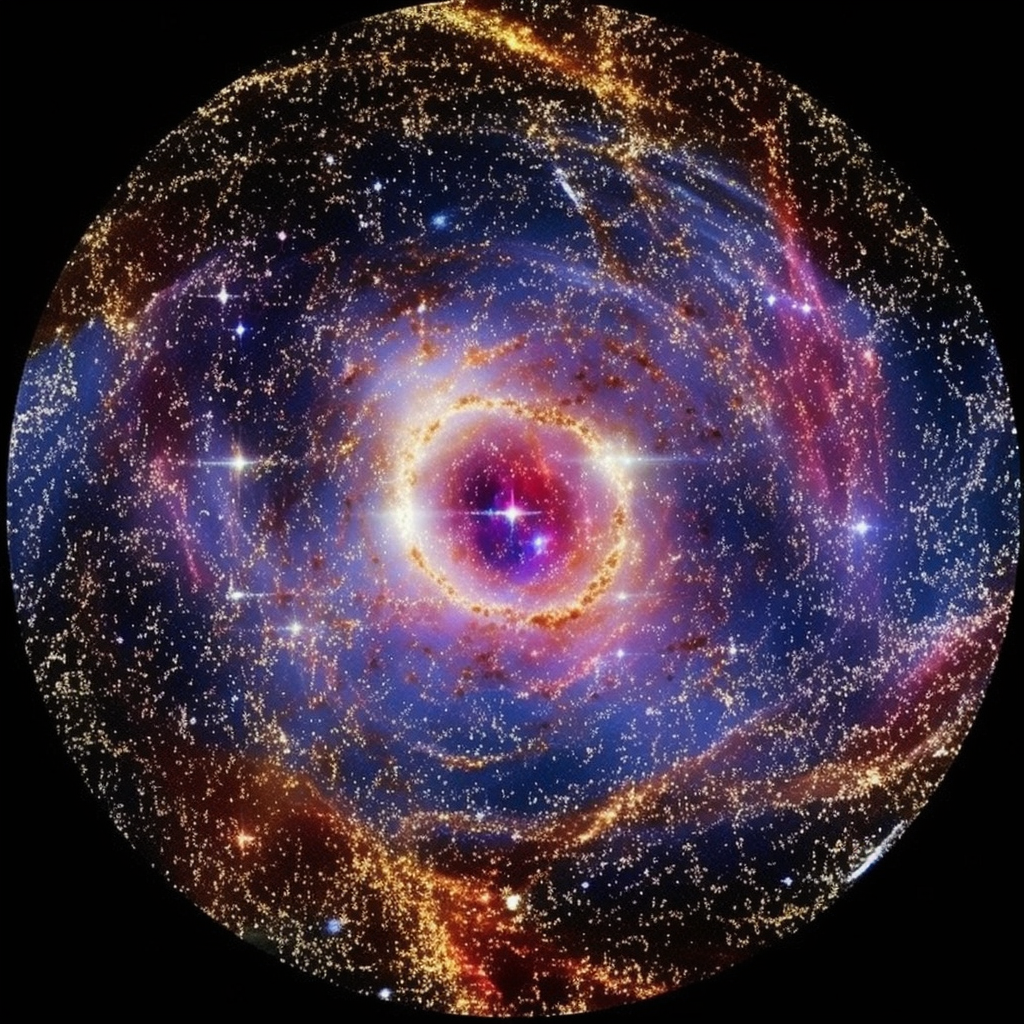Now is a big BANG 😀 😀

First, physics:
Currently, physics faces a huge puzzle related to the enormous discrepancy between the observed cosmological constant and the value calculated from quantum mechanics. The difference is 120 orders of magnitude, or 10^120 times. I don’t want to go into how this is calculated, etc. now. If necessary, I will provide that.
Calculations from quantum mechanics are based on equations with vacuum energy, i.e., Heisenberg’s uncertainty. In short, Heisenberg’s uncertainty is a place in our universe where, within the framework of Planck’s constant, none of our laws, such as conservation of energy, apply. It is simply an unknown, an uncertainty.
Planck’s constant h has a very small value, equal to 6e-34 J*s. From this, one can calculate the so-called Planck length, which is the diameter of such uncertainty, and it is about 10^-35 meters.
Now I will present my hypothesis:
Currently, physics assumes that space is relatively simple, i.e., it is only curved by mass (General Theory of Relativity). So we have 3D+time and evenly distributed space. Physics also assumes that there are 10^35 Heisenberg uncertainties per meter of space.
My hypothesis assumes that there is only one Heisenberg uncertainty in our universe. Then it is located as if in the very center, like the Earth’s core, and the Earth’s surface is our space in which we move. In this case, the radius is the difference in scales between the Planck length and our space. For example, if I am somehow comparable to a meter (haha, cut from a meter), the radius of my space to the core, i.e., the uncertainty (omitting at this stage the addition – Heisenberg), is about 10^35 (there are no units here). So the diameter of this my universe is about 10^35 meters, or 10^19 light-years (this is like the diameter of the universe in my scale). Compare this to the current calculations of cosmologists of Universe diameter, which say about 10^9 light-years. So you can see that 10^120 is quite a lot.
The cosmological constant is, of course, observed on a cosmic scale, for example during the explosion of a supernova “Supernova 1a”. Its size is about 10^16 meters (in a strong approximation). So the distance of this supernova from the Planck length is 10^51 (51=35+16), and its space in the single uncertainty theory is about 4*Pi*r^2 (surface of a sphere, where the radius is the difference in scales between the uncertainty and the object). So the space of this supernova is 10^103 meters. Wow, we already have 103 orders of magnitude, so the difference of 120 orders of magnitude shrinks to 17. I don’t want to bore you anymore that these 17 orders of magnitude can also be justified by this theory and reduced to zero 😀
Now philosophy:
What does it mean to have one uncertainty that is the core of the entire universe and, interestingly, each of us has this core in every place of our body, and it is one and the same uncertainty. As if looking deep inside ourselves under a very large microscope, we will see this uncertainty, and everyone will see the same uncertainty, but from a different perspective. I don’t want to clutter too much in one post, as there are many different consequences of this hypothesis.
In conclusion, I will add that it is possible to nicely explain the curvature of space, which occurs in the general theory of relativity, logically. The curvature of space is nothing more than an object falling into lower scales through the decay of particles, neutrons, protons, or atoms. The decay of particles into smaller ones causes a drop in a lower scale and, as if sinking “underground” in space. Decay is natural and proportional to the mass of the object…
I leave this as a treat for those interested…
Regards,
wonabru